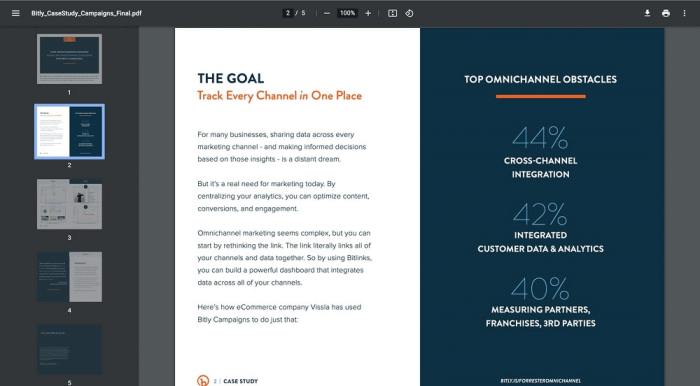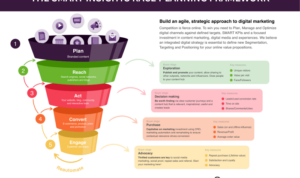Writing Case Studies for Marketing dives into the art of storytelling and data-driven strategies to elevate your marketing game. Get ready to explore the world of engaging narratives and impactful visuals that drive results.
From discussing the significance of customer testimonials to the power of social media in sharing your success stories, this guide covers it all.
Introduction to Writing Case Studies for Marketing

Case studies are a crucial tool in the field of marketing, allowing companies to showcase their success stories and demonstrate the effectiveness of their strategies. These real-life examples provide valuable insight into how businesses have overcome challenges, achieved goals, and delivered results.
Importance of Case Studies in Marketing
- Case studies offer social proof: By highlighting satisfied customers and successful projects, case studies build credibility and trust with potential clients.
- They show real-world application: Unlike theoretical concepts, case studies demonstrate how marketing strategies work in practice, making them more relatable and actionable.
- Case studies provide measurable results: By including specific data and metrics, businesses can quantify the impact of their marketing efforts and showcase tangible outcomes.
Examples of Successful Marketing Case Studies
One notable example of a successful marketing case study is the Dove Real Beauty Campaign. By challenging traditional beauty standards and celebrating diversity, Dove was able to connect with consumers on a deeper level, resulting in increased brand loyalty and sales.
Impact of Case Studies on Marketing Strategy
- Informing decision-making: Case studies provide valuable insights that can inform future marketing strategies and help businesses make more informed decisions.
- Educating potential clients: By sharing success stories through case studies, companies can educate potential clients about their capabilities and showcase their expertise.
- Building brand reputation: Well-crafted case studies can enhance a company’s reputation in the industry, positioning them as a leader and innovator in their field.
Components of a Marketing Case Study
When creating a marketing case study, there are several key components that are typically included to provide a comprehensive overview of the success story being shared. These components help structure the case study and make it engaging for the audience.
Typical Sections in a Marketing Case Study
- Introduction: A brief overview of the company and the problem or challenge they were facing.
- Objectives: Clearly defined goals and objectives that the company aimed to achieve.
- Strategy: Explanation of the approach taken to address the challenge and achieve the set objectives.
- Implementation: Details on how the strategy was implemented, including tools and tactics used.
- Results: Presentation of the outcomes and impact of the implemented strategy on the company.
- Conclusion: Summary of key takeaways and lessons learned from the case study.
Importance of Customer Testimonials
Customer testimonials play a crucial role in a marketing case study as they provide real-life examples of the success achieved by the company. Testimonials add credibility to the case study and help build trust with the audience. They offer a personal touch and showcase the positive experiences of actual customers, making the success story more relatable and convincing.
Examples of Compelling Visuals, Writing Case Studies for Marketing
Using visuals can enhance a marketing case study and make it more engaging for the audience. Some examples of compelling visuals to include are:
- Infographics: Visual representations of data and key points to simplify complex information.
- Charts and Graphs: Illustrations to showcase results and trends in a visually appealing way.
- Before-and-After Images: Visual comparisons to highlight the transformation or impact of the implemented strategy.
- Customer Quotes: Pull quotes from testimonials to emphasize key points and add authenticity.
- Videos: Short clips featuring customer interviews or success stories to add a dynamic element to the case study.
Best Practices for Writing Marketing Case Studies: Writing Case Studies For Marketing

When it comes to writing marketing case studies, there are some best practices that can help you craft a compelling narrative and support your claims with data and analytics.
Importance of Storytelling in Case Studies
Using storytelling in case studies is crucial because it helps engage readers on an emotional level, making the information more memorable and relatable. By weaving a narrative throughout the case study, you can create a connection with your audience and hold their attention.
Tips for Crafting a Compelling Narrative
- Start with a hook: Grab your reader’s attention from the beginning with a compelling opening that sets the stage for the rest of the case study.
- Focus on the customer: Make the customer the hero of the story by highlighting their challenges, goals, and the solutions your product or service provided.
- Include real-life examples: Use specific details, quotes, and anecdotes to bring the case study to life and make it more relatable.
- Show the transformation: Clearly demonstrate the impact of your product or service on the customer’s business, showcasing measurable results and success stories.
Significance of Data and Analytics
Data and analytics play a crucial role in supporting the claims made in a marketing case study. By including relevant data points, statistics, and metrics, you can provide evidence of the success of your product or service. This helps build credibility and allows readers to see the tangible results achieved by your customers.
Formatting and Structure of a Marketing Case Study
When it comes to creating a marketing case study, the structure plays a crucial role in effectively conveying the information to the audience. A well-organized and visually appealing layout can make a case study more engaging and easier to understand.
Ideal Structure for a Marketing Case Study
To ensure a clear and concise presentation, a marketing case study should typically follow this structure:
– Introduction: Provide a brief overview of the company or client, the problem they were facing, and the solution offered.
– Background: Detail the context and challenges faced by the company, including market conditions, competition, and any relevant data.
– Solution: Explain the approach taken to address the problem, including strategies, tactics, and implementation.
– Results: Present the outcomes of the implemented solution, including key metrics, performance indicators, and the impact on the business.
– Conclusion: Summarize the key takeaways and lessons learned from the case study.
Creating Visually Appealing Layouts
To enhance the visual appeal of a marketing case study, consider the following tips:
– Use a consistent color scheme and typography throughout the document for a cohesive look.
– Incorporate relevant images, charts, graphs, and infographics to illustrate key points and data.
– Break up text with headings, subheadings, and bullet points to improve readability and highlight important information.
– Utilize white space effectively to prevent overcrowding and make the content more digestible.
Use of Headings, Subheadings, and Bullet Points
Headings, subheadings, and bullet points can help organize information and guide the reader through the case study efficiently. They can:
– Provide a clear structure and hierarchy to the content.
– Highlight key points and make them stand out.
– Break down complex information into smaller, more manageable sections.
– Improve overall readability and comprehension for the audience.
Promoting and Sharing Marketing Case Studies
To effectively promote and share marketing case studies, it is important to utilize various marketing channels and leverage the power of social media. This not only helps in reaching a wider audience but also in generating leads and converting potential customers. Here are some strategies to make the most out of your marketing case studies:
Strategies for Promoting Case Studies
- Utilize email marketing: Send out newsletters or dedicated emails highlighting your case studies to your subscriber list.
- Partner with industry influencers: Collaborate with influencers in your niche to share your case studies with their followers.
- Feature case studies on your website: Create a dedicated section on your website to showcase your case studies for visitors to explore.
Role of Social Media in Sharing Case Studies
- Share on multiple platforms: Post your case studies on platforms like LinkedIn, Twitter, and Facebook to maximize visibility.
- Engage with your audience: Encourage discussions and feedback on social media posts to generate interest and increase engagement.
- Use visuals: Incorporate images, infographics, and videos to make your case studies more appealing and shareable on social media.
Leveraging Case Studies for Lead Generation and Conversion
- Include CTAs: Strategically place call-to-action buttons within your case studies to guide readers towards taking the desired action.
- Offer downloadable versions: Provide downloadable PDF versions of your case studies in exchange for contact information to capture leads.
- Track performance: Monitor the performance of your case studies using analytics to optimize for lead generation and conversion over time.












